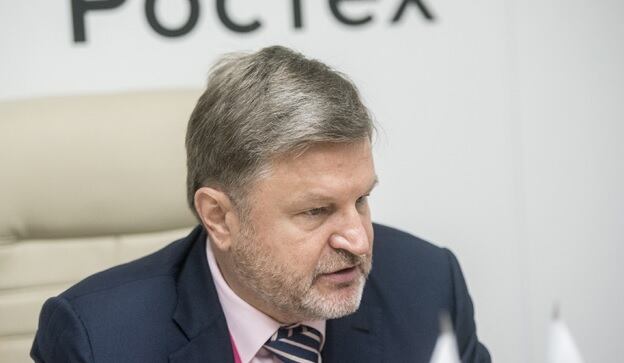HELSINKI — The Norwegian Armed Forces are exploring the use of new methods and technologies to better protect military communications against interference and jamming of GPS systems by Russia.
The Norwegian government has decried what it calls continued “electronic harassment” of critical communications systems and networks by the Russian government.
The military’s move was triggered by fresh intelligence reports from national security agencies that link the jamming of GPS signals — most recently during the Trident Juncture joint exercises in the High North with NATO held October to November 2018 — to electronic interference by Russia.
Most of the incidents of jamming since 2017 coincided with joint Norway-NATO exercises in the High North. The region is close to the heavily fortified military installations on the Kola Peninsula, which houses Russia’s Northern Fleet and elite Arctic land, air and naval forces.
RELATED

Incidents of signals jamming by Russia are documented in the Norwegian Intelligence Service’s (E-tjenesten) annual national risk and situation report delivered to the government in February.
The NIS report details repeated incidents since 2017 where GPS signals and other secured communications between Norwegian Armed Forces, or NAF, units engaged in exercises were subjected to “blocking measures” from sites located in Russia.
Signals jamming presents a new challenge to Norwegian and allied training operations near Norway’s frontier with Russia, said Lt. Gen. Morten Haga Lunde, the head of NIS.
“Jamming is also a threat to, among other things, to civilian air traffic, police and medical-related operations in peacetime,” Lunde added.
The Focus 2019 intelligence report, which deals with perceived risks and threats to Norway’s national security, reveals a number of so-called mock attacks by Russia on NAF installations in 2017 and 2018.
In one such incident recorded in February 2018, 11 Russian Su-24 aircraft flying in an attack formation performed a “mock strike” on the NIS-operated Arctic radar station at Vardø.
The “mock strike” squadron reversed course and returned to its home air base at Monchegorsk, on the Kola Peninsula, shortly before it entered Norwegian airspace.
Norway wants to combat such aggressive interference by Russia, said Defence Minister Frank Bakke-Jensen.
The Norwegian government expressed its disapproval of electronic jamming actions by Russia and is strengthening collaboration with Nordic partner states to improve intelligence sharing regarding the Russian military’s signal-blocking technologies and measures, Bakke-Jensen said.
“This type of interference is unacceptable, that much is very clear. Russia must stop these type of activities,” the minister said.
Finland also informed Moscow of its own protest over suspected signals jamming of both military and civilian communications systems by the Russian military near its northern border with Russia.
The Helsinki government summoned the Russian ambassador to Finland in November 2018 to explain why its civilian and military aircraft were reporting incidents of attempted electronic jamming of systems. All events were recorded by aircraft pilots while flying in areas of northern Finland near the country’s border with Russia.
Moscow denied involvement in jamming critical communications in either Norway or Finland.
Russia’s growing displeasure with near-neighbors Norway and Finland stems from Norway’s push to grow NATO’s presence in the High North. Moscow is also unhappy over nonaligned Finland’s deepening defense relationship with NATO through the Partnership for Peace program.
In support of a stronger NATO presence in the High North, Norway is redeveloping the civilian industrial harbor at Grøtsund-Tønsnes to cater to visiting allied nuclear submarines. Grøtsund-Tønsnes is located north of Tromsø and is 234 miles from Norway’s border with Russia.
Grøtsund-Tønsnes will provide a secure harbor for allied ships, which have not had such a safe High North facility since Norway closed the Olavsvern naval base near Tromsø in 2009.
“Russia regards Norway’s desire for an increased NATO presence as contrary to the historical traditions of good neighborly relations and cooperation in the Arctic. By doing this, Oslo will escalate tensions and raise the risk of military action,” Russian Foreign Affairs Ministry spokeswoman Maria Zakharova said.
Russia is also irate over Norway’s support for the NATO “Four Thirties” initiative. The plan calls for a large-scale, multi-branch and modular-designed rapid response force that can be deployed within a 30-day period. The proposed “unit” would comprise 30 battalions, 30 air squadrons and 30 naval vessels to be deployed in 30 days or less.
“We will take a holistic approach to this new NATO project, and then see what Norway’s contribution might be,” Bakke-Jensen said.
Norway’s role in the Four Thirties initiative is expected to be outlined in the NAF’s next long-term defense plan due in 2020. This timeline fits neatly into NATO’s own schedule. The alliance plans to identify relevant forces that can be integrated into the rapid forces initiative by 2020.
Gerard O'Dwyer is the Scandinavian affairs correspondent for Defense News.






